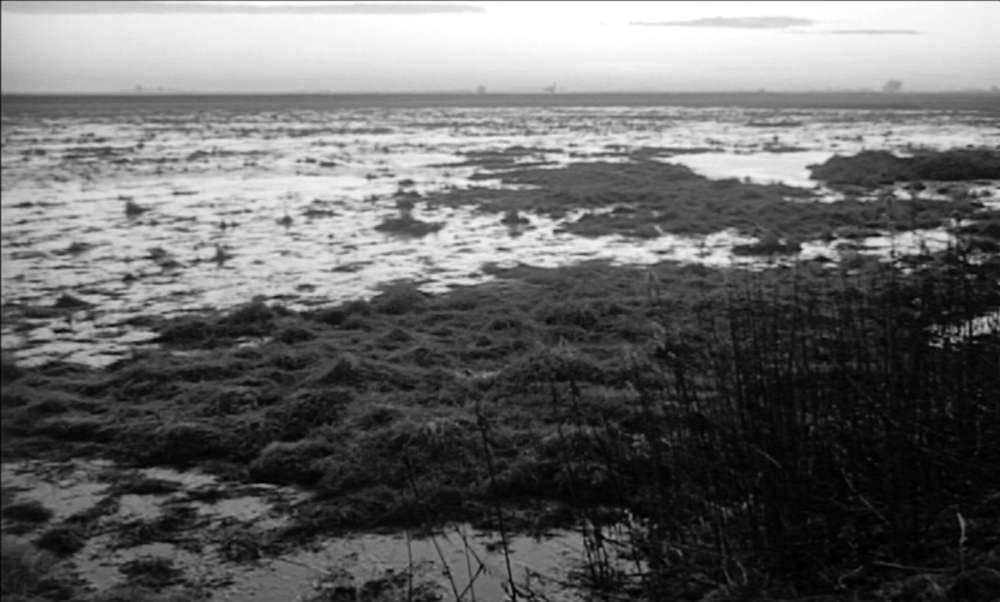Sátántangó
Galerie Andreas Huber, Vienna, Austria
Galerie Andreas Huber, Vienna, Austria

It’s doubtful whether anyone stayed for the duration of Béla Tarr’s seven-and-a-quarter-hour film Sátántangó (Satan’s Tango, 1994), when it was screened daily at the Galerie Andreas Huber in May. Besides its length, one had to contend with an unforgiving chair, the lack of air inside the gallery’s black box and, most of all, the nagging thought: why not do this at home? The film can be rented from a nearby video store or ordered online from Amazon.
But this sort of pointlessness also happens to be captured by the film, which itself straddles the vague line between cinema and art: Sátántangó hardly follows a script, its roles are played by untrained actors and its non-linear narrative is largely experiential and loop-like, due to multiple re-tellings of events from different points of view. The tale is roughly this: the peasants of a village in the Hungarian plains, facing the end of Communism, wait futilely for the arrival of a potential (capitalist) saviour who never shows up. In one scene, a couple dance in circles at a pub; every so often the woman tries to hit another guest on the head as she whirls by. But it’s hard to say if she’s dancing or being dragged in this dance of oblivion or death. The only thing that’s clear is that they’re not going home anytime soon.
Artist Josef Dabernig was invited to curate the exhibition as part of a series at the Vienna Art Fair, in which artists are invited to curate shows in a number of commercial gallery spaces. This year’s theme was ‘Art and Film’. It’s not the first time that Tarr’s magnum opus has been shown in an art space as opposed to the cinema: the Museum of Modern Art in New York screened it in 2006 with two intermissions. But here it’s less about the incompatibility of Sátántangó with mainstream cinema, considering its extra-long takes, which enable its focus on atmosphere, individual presence and stagnation (elements also common to Dabernig’s films) than a provocation – one that works against the status of art and the gallery itself. Dabernig has a long history of subverting spaces: his proposed designs for a new Kunsthaus Graz use dilapidated and at times historical locations instead of something Bilbao-like. So a pseudo-Venetian palazzo becomes the proposed museum’s new façade, a bunker or an underground cellar with an easily-missed entrance among its gallery spaces.
For a month, Dabernig almost transformed the Galerie Andreas Huber into a cinema, though the sound of the gallerist’s phone calls and comings and goings served as a reminder otherwise. Also, visitors could come and go as they pleased. There were no expectations to stay to the end, and walking out early wasn’t the insult it is at the cinema.
By bringing in a film from outside the art world, Dabernig stripped the gallery of its characteristic atmosphere; the typical shopping mall-like movement through film and video exhibits was also suspended. There was a certain security and freedom in knowing that a single, earnest viewer could watch the entire film, rather than chase after the endless permutations of multi-channel installations. Altogether, Dabernig’s movie theatre tucked into a gallery space seemed capable of unshackling itself from the limitations of both spaces. Its straightforward offer of focused concentration proved an unexpected and almost nostalgic surprise.
























